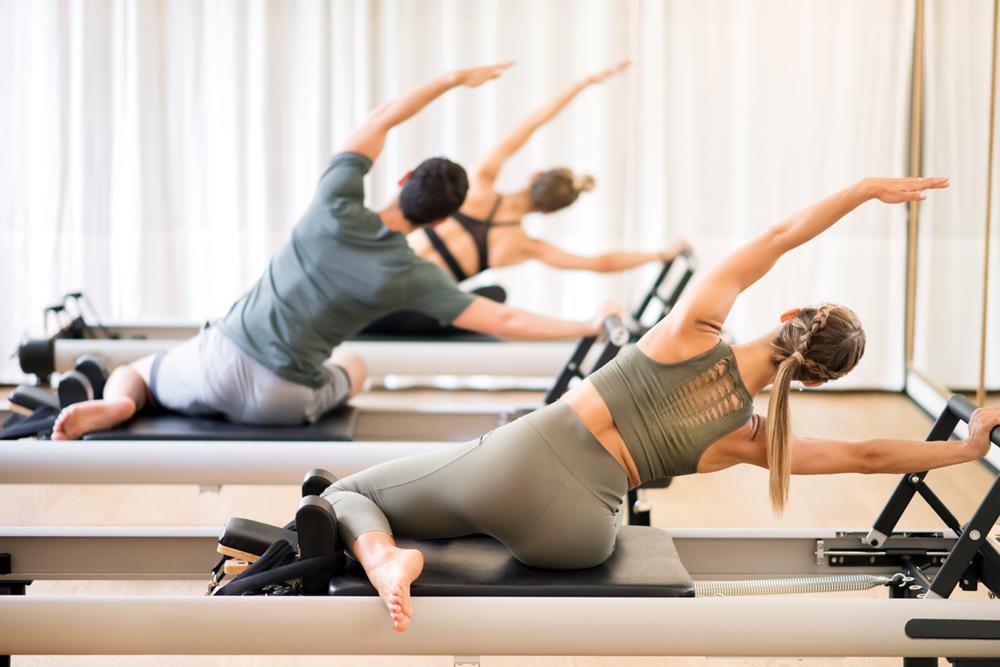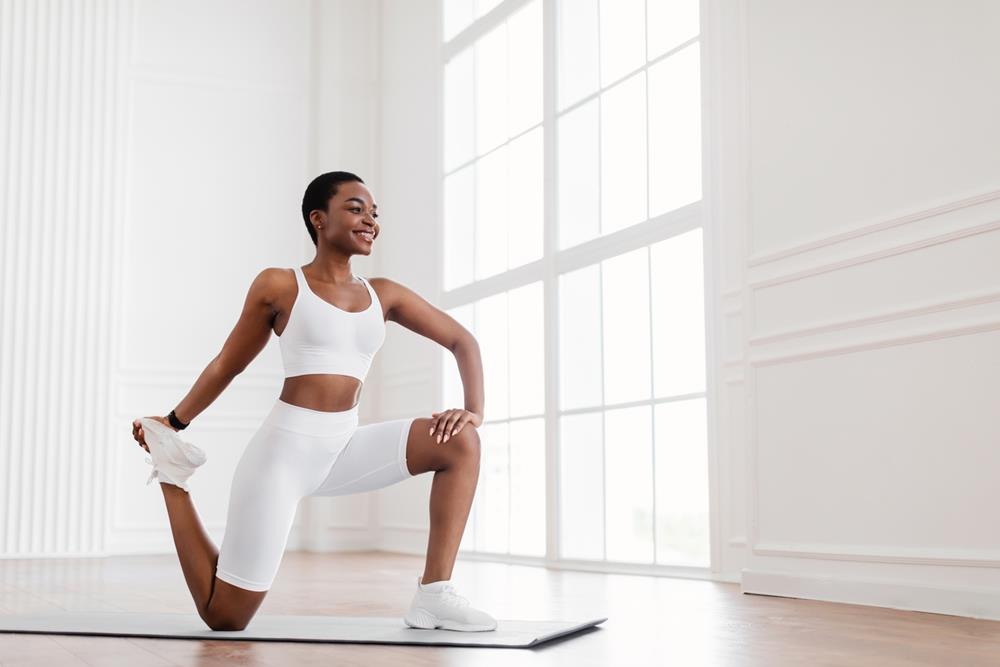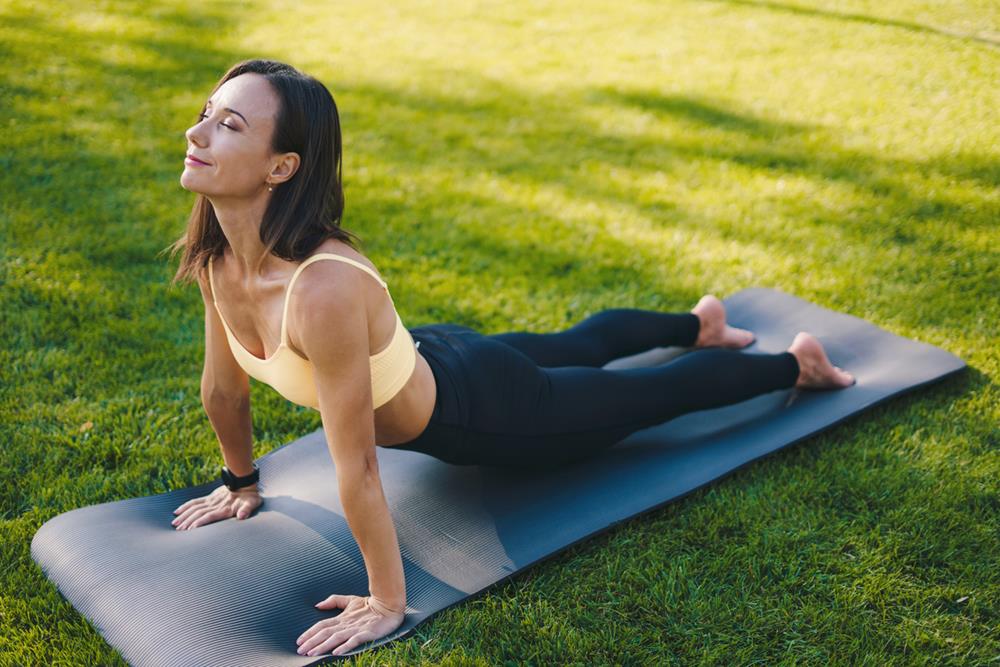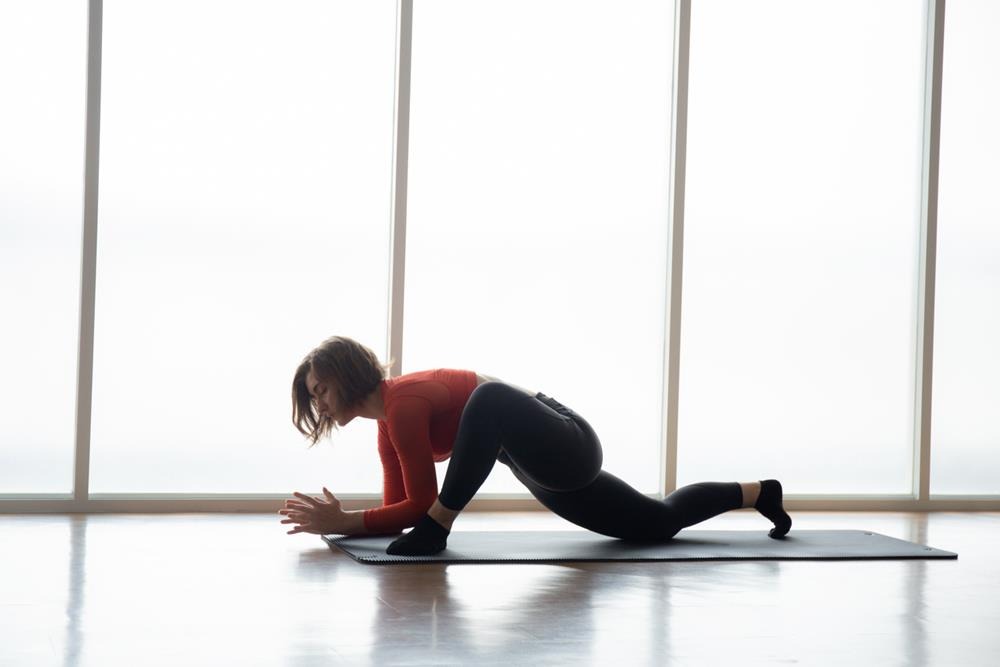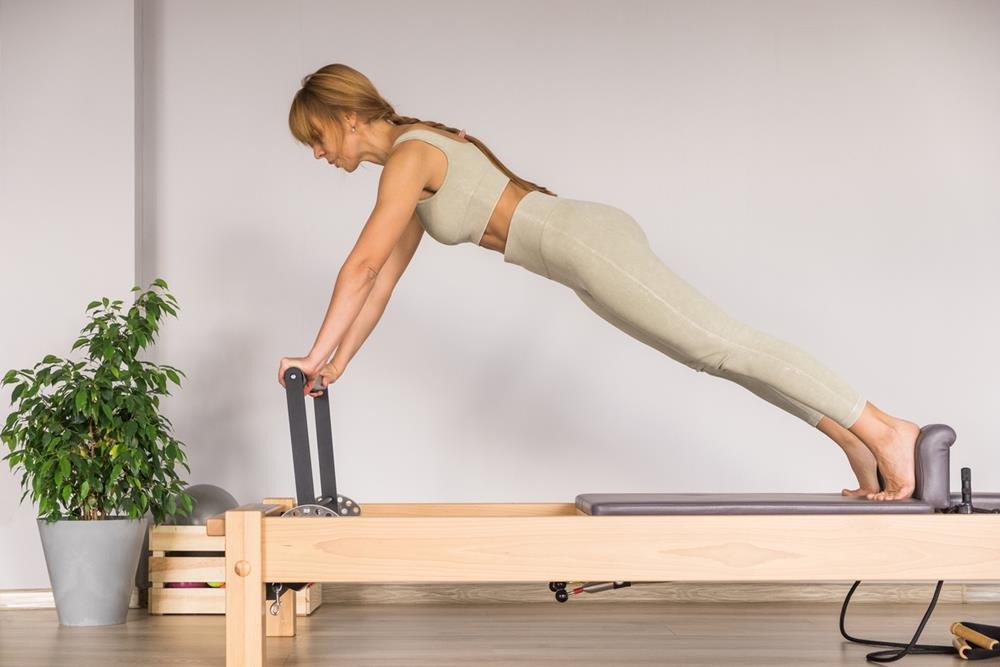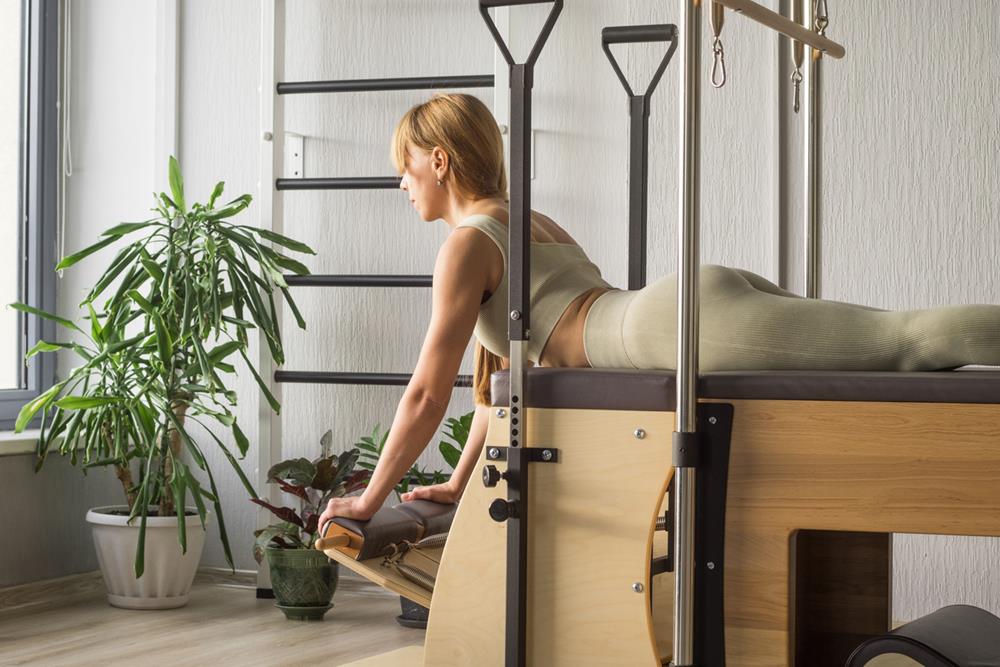Have you ever heard of Pilates? It’s a type of exercise that’s not just for people who want to stretch and relax. Actually, it’s super helpful for runners, too! Imagine Pilates as a secret ingredient that can make your running even better. More and more people who love running are starting to practice Pilates because it helps them in so many ways.
In this article, we’re going to talk about why every runner should think about adding Pilates to their routine. It’s all about making you stronger and more flexible and teaching you how to breathe better, which are all super important when you’re out there hitting the pavement or trails. So, let’s dive in and find out how Pilates can be a game-changer for runners!
Pilates Improves Core Strength
Core strength is vital for anyone, but for runners, it’s a game-changer. The core muscles, including the abdominals, lower back, obliques, and hips, are the epicenter of all movement. They play a pivotal role in maintaining stability, posture, and energy efficiency during runs. Strong core muscles act as a stabilizing force, preventing unnecessary movement and energy wastage, allowing for a more focused and effective running technique.
How Pilates Bolsters Core Muscles
Pilates is a precision-based exercise methodology that zeroes in on core strength like no other workout regimen. It engages the deeper, often neglected muscles, providing a comprehensive core workout that traditional exercises might miss. Here’s how Pilates makes a difference:
- Precision and Control: Pilates emphasizes controlled movements and breathing, encouraging a deeper connection between the mind and the body. This focus enhances the activation of core muscles during each exercise.
- Balance and Stability: Many Pilates exercises involve maintaining balance in challenging positions, which requires a strong core. This directly translates to better stability and balance in running.
- Targeted Exercises: Pilates includes a variety of exercises specifically designed to strengthen the core muscles. These exercises target the abdominals, back, and pelvic muscles, creating a solid foundation that supports every running stride.
The Direct Benefits of a Stronger Core for Runners
- Improved Running Efficiency: A strong core allows runners to maintain optimal form even as fatigue sets in, reducing the risk of injury and improving performance.
- Enhanced Balance and Coordination: With a stable core, runners can achieve better balance and coordination, navigating uneven terrains and sudden changes in direction with ease.
- Injury Prevention: A well-conditioned core supports the spine, hips, and pelvic area, reducing the strain on these areas during running and minimizing the risk of injuries.
Pilates Enhances Flexibility
Flexibility is often overlooked in traditional running training, yet it plays a crucial role in a runner’s performance and injury prevention. Flexibility allows for a greater range of motion, smoother strides, and quicker recovery. This is where Pilates comes into play, offering runners a unique avenue to enhance their flexibility.
The Role of Flexibility in Running
- Injury Prevention: Flexible muscles are less prone to injuries caused by overextension and sudden movements. For runners, improved flexibility in the legs, hips, and back can significantly reduce the risk of strains and sprains.
- Improved Performance: Flexibility contributes to more efficient movement patterns, allowing runners to achieve longer strides and better posture. This efficiency can lead to improvements in speed and endurance over time.
How Pilates Improves Flexibility
Pilates is renowned for its ability to increase flexibility through a series of controlled, fluid movements that stretch and strengthen the body. Here’s how it achieves this:
- Targeted Stretching: Pilates exercises often involve stretching in one area while stabilizing in another, providing a comprehensive stretch that targets multiple muscle groups simultaneously. This approach ensures that muscles are stretched and lengthened, improving overall flexibility.
- Dynamic Movement: Unlike static stretching, Pilates focuses on dynamic movements that mimic the flow of running. This not only enhances flexibility but also prepares the muscles for the type of movement they will perform during a run.
- Mind-Body Connection: Pilates teaches practitioners to be mindful of their movements and breathing, which can help recognize and release tension in the body. This awareness can lead to deeper stretches and greater flexibility over time.
The Benefits of Enhanced Flexibility for Runners
- Decreased Muscle Soreness: With improved flexibility, muscles are less likely to become tight and sore after runs, leading to quicker recovery times.
- Greater Range of Motion: Enhanced flexibility allows for a greater range of motion in the joints, which can improve stride length and running efficiency.
- Reduced Risk of Injury: Flexible muscles and tendons are more resilient and less susceptible to injuries, a significant benefit for runners who push their bodies to the limit.
Instruct You on How to Manage Your Breathing
Breathing might seem like the most natural process in the world, especially for runners who rely on their breath to power through miles. However, the way you breathe can profoundly affect your running performance and overall health. Pilates, with its focus on controlled, mindful breathing, offers valuable lessons for runners looking to optimize their breathwork.
Understanding the Importance of Proper Breathing
- Oxygen Efficiency: Efficient breathing techniques increase the amount of oxygen delivered to your muscles, enhancing endurance and performance.
- Reduced Fatigue: Proper breathing helps in better carbon dioxide expulsion, which can reduce the buildup of lactic acid in muscles, delaying fatigue.
- Stress Reduction: Controlled breathing has a calming effect on the nervous system, reducing stress levels and improving focus during runs.
Pilates Breathing Techniques for Runners
Pilates emphasizes breathing techniques that can be particularly beneficial for runners:
- Lateral Thoracic Breathing: This technique focuses on expanding the ribcage sideways while keeping the abdominal muscles engaged. It encourages deep inhalations and exhalations without losing core stability, teaching runners how to maintain a strong, stable core while breathing deeply.
- Coordination with Movement: Pilates teaches how to synchronize breath with movement, promoting a rhythmic breathing pattern that mirrors the runner’s stride. This synchronization can help in maintaining a steady pace and improving efficiency.
- Mindful Breathing: Pilates encourages being mindful of each breath, which can help runners become more aware of their breathing patterns and make adjustments as needed during their runs.
Benefits of Pilates Breathing for Runners
- Enhanced Lung Capacity: Regular practice of Pilates breathing exercises can increase lung capacity, allowing runners to take deeper, more efficient breaths.
- Improved Core Stability: The focus on engaging the core during breathing exercises strengthens the core muscles, which are vital for maintaining good running posture and reducing the risk of injury.
- Better Stress Management: Learning to control breathing helps manage stress levels, both on and off the track, leading to more focused and enjoyable runs.
Deep breathing techniques learned in Pilates for runners will assist you in better managing your breath while running, enhancing core balance.
Physical Exertion
When thinking about physical exertion, running and Pilates might seem worlds apart. Running is often associated with high-intensity cardiovascular challenges, while Pilates might be mistakenly perceived as a gentle, low-impact form of exercise. However, Pilates offers a unique form of physical exertion that complements and enhances a runner’s training regimen by building strength, control, and endurance in ways that running alone cannot.
The Misconception of Pilates as Easy
- Core Engagement: Pilates requires deep core engagement and muscle control, which can be incredibly challenging. The focus on slow, precise movements demands a high level of physical exertion from muscles not typically engaged during running.
- Full-Body Workout: Despite its reputation, Pilates provides a comprehensive full-body workout that challenges every muscle group. This includes the stabilizing muscles around the joints, which are crucial for runners.
How Pilates Contributes to a Runner’s Physical Exertion
- Strength Without Bulk: Pilates strengthens the muscles in a balanced and functional way without adding unnecessary bulk. This is ideal for runners who benefit from being strong but also light and agile.
- Endurance and Stamina: Pilates exercises improve muscular endurance, which translates into better stamina during long runs. The focus on controlled, sustained movements under tension helps build a type of endurance that is beneficial for enduring the physical demands of running.
- Injury Prevention: By emphasizing proper alignment and balanced muscle development, Pilates can reduce the risk of injuries caused by muscular imbalances or overuse. This preventative aspect of Pilates is a crucial form of physical exertion that protects the body from the high-impact nature of running.
The Complementary Nature of Pilates and Running
- Active Recovery: Pilates can serve as an active recovery workout, helping to loosen tight muscles and maintain mobility on rest days from running, which aids in overall physical recovery and exertion management.
- Flexibility and Range of Motion: The stretching and lengthening of muscles in Pilates improve flexibility and range of motion, which can enhance running mechanics and efficiency.
Pilates Reformer Lessons Can Assist With Knee Issues
Knee issues are a common hurdle for many runners, often resulting from overuse, improper form, or imbalances in muscle strength. Traditional exercises might exacerbate the problem, but Pilates, particularly Reformer Pilates, offers a unique approach that can help in managing and potentially alleviating knee pain. The Pilates Reformer, with its sliding carriage and resistance springs, provides a versatile platform for exercises that can target and strengthen the muscles around the knees without placing undue stress on them.
Understanding Knee Issues in Runners
- Common Causes: Knee pain in runners can stem from a variety of issues, including patellofemoral pain syndrome (runner’s knee), IT band syndrome, and ligament injuries. These conditions are often related to weaknesses or imbalances in the muscles supporting the knee.
- The Need for Targeted Strengthening: Addressing knee issues requires strengthening the quadriceps, hamstrings, hip flexors, and calf muscles in a balanced way to ensure proper knee alignment and function.
How Pilates Reformer Assists with Knee Rehabilitation
- Low Impact: The Reformer provides a low-impact environment that allows for strengthening without further irritating the knees. This is crucial for recovery and for runners who are prone to knee issues.
- Customizable Resistance: The adjustable springs on the Reformer enable tailored resistance levels, making it possible to gradually increase the strength of the muscles supporting the knee without overloading it.
- Precision and Control: Reformer exercises demand precision and control, which helps in engaging the correct muscles during the workout. This focus ensures that the exercises are beneficial and do not exacerbate knee problems.
Specific Benefits for Knee Issues
- Improved Muscle Balance: The Reformer facilitates exercises that target muscle imbalances, a common cause of knee pain. Strengthening the muscles evenly around the knee helps maintain proper knee alignment and function.
- Enhanced Joint Stability: Strengthening the muscles around the knee enhances the stability of the joint, reducing the risk of injuries that can arise from running.
- Increased Flexibility: The controlled movements on the Reformer also help in gently increasing flexibility, which can reduce stiffness and improve the range of motion around the knee.
Integrating Pilates Reformer into a Runner’s Routine
For runners dealing with knee issues, incorporating Pilates Reformer sessions into their training regimen can offer a path to recovery and strengthening that might not be achievable through running alone. It’s important, however, to work with a qualified Pilates instructor who can design a program tailored to the specific needs and rehabilitation goals of the runner.
Pilates is a Great Way to Shape Your Muscles
Pilates has long been celebrated for its ability to shape and tone the body without adding unwanted bulk, making it an excellent choice for runners aiming to optimize performance through a lean, strong physique. Unlike weightlifting or high-intensity interval training that might increase muscle size, Pilates focuses on elongating and strengthening the muscles, promoting a balanced and functional form that can enhance running efficiency.
The Pilates Approach to Muscle Shaping
- Whole-Body Engagement: Pilates exercises require the engagement of multiple muscle groups simultaneously, ensuring a balanced workout that can prevent overdevelopment in any single area.
- Strength and Flexibility: The unique combination of strength and flexibility work in Pilates leads to toned, lean muscles rather than bulk. This is particularly beneficial for runners who need flexibility to maintain stride length and efficiency.
- Core Focus: A strong core is a cornerstone of Pilates, and this emphasis contributes to better posture, improved balance, and a more efficient running form. The deep abdominal and back muscles targeted in Pilates are essential for a runner’s stability and power.
Benefits of Pilates for Muscle Toning in Runners
- Enhanced Running Performance: Sculpted, balanced muscles contribute to more efficient running mechanics, allowing for smoother, faster runs with reduced energy expenditure.
- Injury Prevention: The muscular balance achieved through Pilates helps correct imbalances that could lead to injuries. Strong, well-shaped muscles support the joints and absorb the impact of running, reducing the risk of stress injuries.
- Improved Posture and Balance: The postural improvements from Pilates not only contribute to a more aesthetically pleasing physique but also enhance running form and efficiency, reducing the likelihood of fatigue and injury.
Pilates for Every Runner
- Accessibility: Pilates exercises can be modified to suit all levels, from beginners to elite athletes, making it accessible for every runner regardless of experience or fitness level.
- Variety: With an extensive repertoire of exercises, Pilates offers variety in training, keeping the routine engaging and challenging as strength and endurance improve.
Conclusion
Pilates is a fantastic complement to any runner’s routine, offering a wealth of benefits that go beyond just improved performance. Whether you’re looking to strengthen your core, increase your flexibility, learn effective breathing techniques, or find a low-impact way to condition your body, Pilates has something for you. It can even offer targeted support for common issues like knee pain.
Beyond the physical benefits, Pilates helps shape and tone muscles, creating a balanced and resilient body ready to take on the challenges of running. Incorporating Pilates into your training can help you become a stronger, more efficient, and healthier runner.


